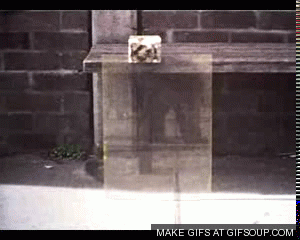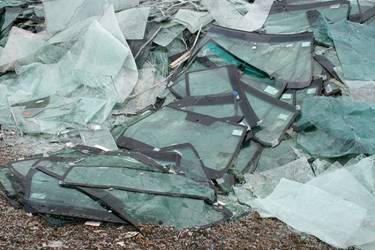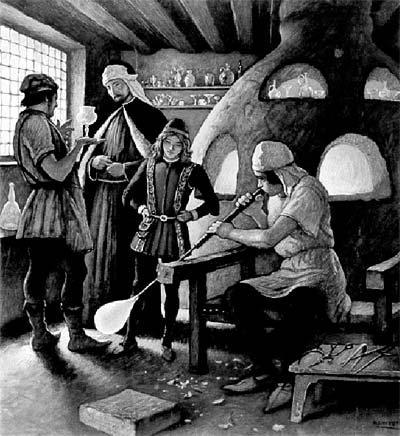Its been a while since we got our glass geek on. These fact-filled glass trivia were very popular when we were on the old blog format, and we’re ready to burst with glass bits-of-info.
When glass breaks, the cracks move at speeds of up to 3,000 miles per hour.
 Thin-glass goblets can vibrate when hit by sound waves. This is due to resonance.
Thin-glass goblets can vibrate when hit by sound waves. This is due to resonance.
Glass takes over 1 million years to decompose in our landfills and dumps. Recycling glass reduces air pollution by 20%, and water pollution by 50%. Only 27% of the glass used in the United States is recycled. A typical glass recycling factory can recycle up to 20 tons of glass per hour. The energy saved from recycling 1 glass bottle can run a 100-watt bulb for 4 hours.
 Hydrofluoric acid will dissolve glass.
Hydrofluoric acid will dissolve glass.
From the start of time glass has been available to man. Stone Age man used obsidian (a naturally formed glass) for cutting tools and weapons. The Phoenicians also accidentally discovered glass when cooking near nitrates that when heated formed glass. However, we have to wait until the Egyptian times before we can actually trace deliberate glass manufacture which was in the form of beads.

In 1500 BC, we believe the first glass bottles were made using the “Core-Forming Method”.

The term glass developed in the late Roman Empire. It was in the Roman glassmaking center at Trier, now in modern Germany, that the late-Latin term glesum originated, probably from a Germanic word for a transparent, lustrous substance.Glass manufacture had developed in Venice by the time of the Crusades (A.D. 1096-1270), and by the 1290’s an elaborate guild system of glass workers had been set up.
Later this week: Part 2 All New Glass Fun Facts!
Click HERE to jump to Part 2
Pingback: “All New” Glass Fun Facts: Part 2 | Washington Glass Studio